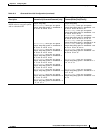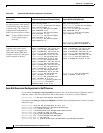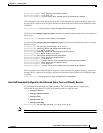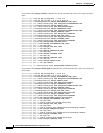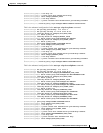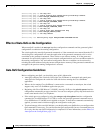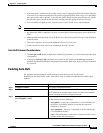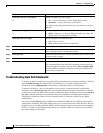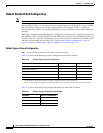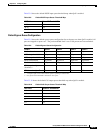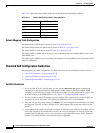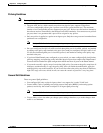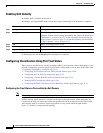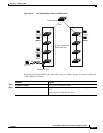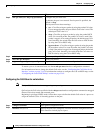
33-35
Catalyst 2960 and 2960-S Switch Software Configuration Guide
OL-8603-09
Chapter 33 Configuring QoS
Displaying Auto-QoS Information
Displaying Auto-QoS Information
To display the initial auto-QoS configuration, use the show auto qos [interface [interface-id]]
privileged EXEC command. To display any user changes to that configuration, use the show
running-config privileged EXEC command. You can compare the show auto qos and the show
running-config command output to identify the user-defined QoS settings.
To display information about the QoS configuration that might be affected by auto-QoS, use one of these
commands:
• show mls qos
• show mls qos maps cos-dscp
• show mls qos interface [interface-id] [buffers | queueing]
• show mls qos maps [cos-dscp | cos-input-q | cos-output-q | dscp-cos | dscp-input-q |
dscp-output-q]
• show mls qos input-queue
• show running-config
Note Catalyst 2960-S switches do not support ingress queueing.
Configuring Standard QoS
Before configuring standard QoS, you must have a thorough understanding of these items:
• The types of applications used and the traffic patterns on your network.
• Traffic characteristics and needs of your network. Is the traffic bursty? Do you need to reserve
bandwidth for voice and video streams?
• Bandwidth requirements and speed of the network.
• Location of congestion points in the network.
These sections contain this configuration information:
• Default Standard QoS Configuration, page 33-36
• Standard QoS Configuration Guidelines, page 33-38
• Enabling QoS Globally, page 33-40 (required)
• Configuring Classification Using Port Trust States, page 33-40 (required
• Configuring a QoS Policy, page 33-47 (required)
• Configuring DSCP Maps, page 33-61 (optional, unless you need to use the
DSCP-to-DSCP-mutation map or the policed-DSCP map)
• Configuring Ingress Queue Characteristics, page 33-67 (optional)
• Configuring Egress Queue Characteristics, page 33-72 (optional)



